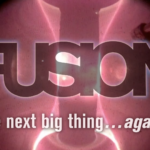America’s nuclear future: Does the public have a fair say in it?
By Seth P. Tuler, Eugene A. Rosa, Thomas Webler | January 31, 2012
For the past two years the Blue Ribbon Commission on America’s Nuclear Future (BRC) has worked to develop a strategy “for managing the back end of the nuclear fuel cycle.” The commission’s final report was released on January 26. It is too early to assess the policy outcomes of the BRC’s effort, but we can take stock now of how effectively it provided opportunities for stakeholder and public engagement.
The BRC process is but the latest in a long history of policymaking processes to address the question of what to do with America’s spent nuclear fuel and high-level wastes. The failure of past government efforts can be traced, in part, to poor stakeholder and public engagement. Early on, BRC commissioners expressed a desire to do better. Commissioner Phil Sharp suggested that the BRC “emulate” how future waste-managing entities should behave, as it would be “an opportunity for public discourse of the first order in this country … and it’s very critical on this issue to have serious conversations about serious issues.” Commissioner Richard A. Meserve stated, “We would hope that this is something where appropriate process, thoughtful education, and a thoughtful way of dealing with the issues actually can change the political dynamic in a way that is helpful.” Unfortunately these aspirations were not realized.
Among scholars and practitioners of public and stakeholder engagement, it is widely understood that controversial and technically complex decisions are best made using participatory processes that meet basic criteria. These processes should be fair, transparent, and inclusive; use analysis and deliberation in a mutually supportive way; make all relevant information widely accessible; provide interested and affected parties with appropriate opportunities for genuine influence; avoid placing undue burdens on participants; and reach closure in a legitimate manner. In addition, the organization running the process should be committed to seeing the process through; provide adequate staffing and resources; evaluate and adapt the process over time; and use public resources efficiently. Clearly the BRC is aware of these criteria, because its draft report proposes that future processes to site and operate a system for managing spent nuclear fuel and high-level waste meet these criteria.
On some of these criteria, the BRC performed reasonably well. To better understand governmental, stakeholder, and public concerns and perspectives, the BRC hosted five public hearings around the country and 12 meetings in Washington, DC. The commission contracted with regional Governors Associations to organize a second series of five public meetings around the country after the draft report was released in July. People could speak at these meetings, either as invited panelists or during public comment periods. Those unable to attend could watch or listen to the meetings on the Internet. The BRC also invited written comments at various points in the process; they received thousands. The commission posted all comments on its website, along with meeting presentations and special commissioned papers. And the manner in which the group is reaching closure is customary for commissions such as this.
Arguably, this process went further than many prior efforts to develop a national strategy for spent nuclear fuel and high-level waste management. But more needed to be done to meet the criteria that the BRC set for itself, and in ways that the commissioners and many stakeholders had hoped for. We identify four major shortfalls:
Insufficient input. Experts and the general public were given opportunities to participate, but these were too constrained. The commission limited public input to three to five minutes per individual. Invited panelists were given no more than 10 minutes in most cases; however, there were times when some speakers were allowed to speak longer. There is a real danger that this arbitrary limitation was perceived as disrespectful by the public and stakeholders, with lasting legitimacy effects. The dynamics of the BRC interaction with the public was another threat to legitimacy as commissioners sometimes engaged in disrespectful interactions with meeting attendees by, for example, asking aggressive and inappropriate questions. Commissioners also did too little to foster extended dialogue.
Inadequate clarity about influence. The BRC published a “What We’ve Heard” report a year into its process, but it was too brief. The commission did not do enough to explain how public testimony or expert reports influenced its deliberations or its draft recommendations. During the public hearings about the draft report, the BRC did facilitate small group discussions. However, it did not make clear how these discussions would — or could — influence the BRC’s thinking on the issues.
Inadequate information availability. The BRC did not make the information it obtained readily available to the public. While all reports and comments submitted to the BRC were posted to its website, it is nearly impossible to sort or search through the information in any systematic way. Public comments have nebulous titles in some cases. A data dump like this does not meet the criterion for making information widely available.
Inadequate plan. The BRC did not proactively articulate a clear plan, including phases of information gathering and feedback. Commissioners listened but did not develop expectations about what would happen based on what they heard. A plan for engaging stakeholders and the public about draft subcommittee reports remained unclear, and ultimately only written comments were solicited. All of this contributed to impression that the commission, similar to past failed practices, was not serious about gathering substantive input. And it contributed to a situation in which those interested in participating could not know the most effective way to do so.
Examining the performance of the BRC process is an opportunity for learning how to take the next step into America’s nuclear future. Legitimate and sound decisions will come about only if the process used to make those decisions meets appropriate expectations for participatory policymaking. The criteria for good process were clearly within the BRC charge. Unfortunately, the BRC did not provide the exemplary model it had hoped for, one that is necessary for successful future efforts to craft and implement an effective spent nuclear fuel and high-level waste management program.
Together, we make the world safer.
The Bulletin elevates expert voices above the noise. But as an independent nonprofit organization, our operations depend on the support of readers like you. Help us continue to deliver quality journalism that holds leaders accountable. Your support of our work at any level is important. In return, we promise our coverage will be understandable, influential, vigilant, solution-oriented, and fair-minded. Together we can make a difference.
Topics: Nuclear Energy, Opinion

















